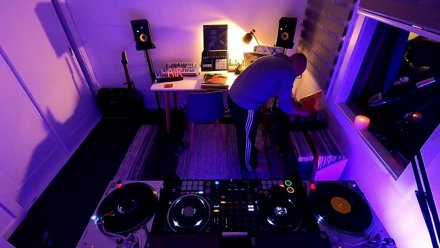Report claims musicians can earn up to 15 times more on Twitch than music streaming platforms

A former Spotify executive has broken down the economic disparities between Twitch and the likes of Spotify and Apple Music, claiming the former affords musicians far deeper opportunities to generate revenue.
In the report, titled Twitch’s Rockonomics, former Spotify chief economist Will Page said Twitch brings overdue change to the industry.
“Artists are now able to build atop the old service models, adding a new lane that goes ‘over the top’ of the traditional streaming model and monetises their own channels instead,” he said.
The report noted that Twitch may only have 9.5 million active streamers, while Spotify had 155 million premium subscribers in February and Apple Music had 72 million paying customers as of June 2020. Twitch subscribers, however, are actively on the platform for 15.8 hours a week on average, and its channel-based format allows for deeper interaction between creator and fan, and thus greater monetisation opportunities, it said.
Being long form, users stay an average hour, while the others are short form or sub-song, he said. Plus, Twitch folks tend to engage on desktop screens, not mobiles, leading to longer engagement.
In addition, its music licensing is first party (user created) while the others are third party, the report noted.
Twitch’s money comes in through duration and interaction (the others are via tracks).
Page referenced Kevin Kelly’s 2008 manifesto 1,000 True Fans which explored how musicians making $100 profit from 1,000 of their biggest fans can make $100,000 a year.
“If you can find your ‘true fans’ and get them to engage with you on Twitch,” Page argued, “then you can burst through the streaming ceiling and potentially monetise them more effectively.”
Musicians can make money from fans by having them subscribe to creators’ channels at $4.99, $9.99 or $24.99 per month.
Fans can buy Bits, a paid virtual good ($1.40 for 100 Bits) to support a streamer.
Artists can target mid-roll ads to Twitch viewers.
According to MiDIA Research, Twitch’s average of 15.8 hours per week compares favouraby to Spotify (6.4 hours), YouTube (5.7) and TikTok (1.9).
Music creators can direct viewers to third-party platforms such as Patreon and PayPal.
According to Page’s calculations, Twitch can pay artists three to 15 times what they would get from Spotify and similar platforms.
Established channels “can see revenue per hour north of 25 cents, with some scaling up to 75 cents”.
Twitch’s Rockonomics uses a number of case studies.
Among them, gaming composer Laura Shigihara reported that her user numbers for streaming and Twitch were roughly the same (150,000 to 200,000), but she made 10 times more on Twitch.
Austin, Texas duo Aeseaes cited Twitch for 70% of earnings in 2019 and 2020 with their three-hour sessions, compared to 6% from streaming services and Bandcamp, and 17% from Patreon and Kickstarter.
When GRAMMY-winning producer RAC’s tour was cancelled last year, he generated more money from Twitch and Patreon than he would have from the live dates.
“It takes time to make it work. You’ve got to grind away, but once you’ve got it up and running, then you’ve got something really quite powerful,” Page said.
“It’s not like Spotify or Apple Music where you can make money while you’re asleep. It’s dependent on interaction.”
Twitch commits to paying artists within 30 days after the end of the month while music streaming platforms lag time can be up to six to eight months.
“A, you own your money and B, you see that money a lot faster. In terms of distinctions, that’s quite a big one.
“It may not pay your bills, but at least you own it and you see it faster.”

































